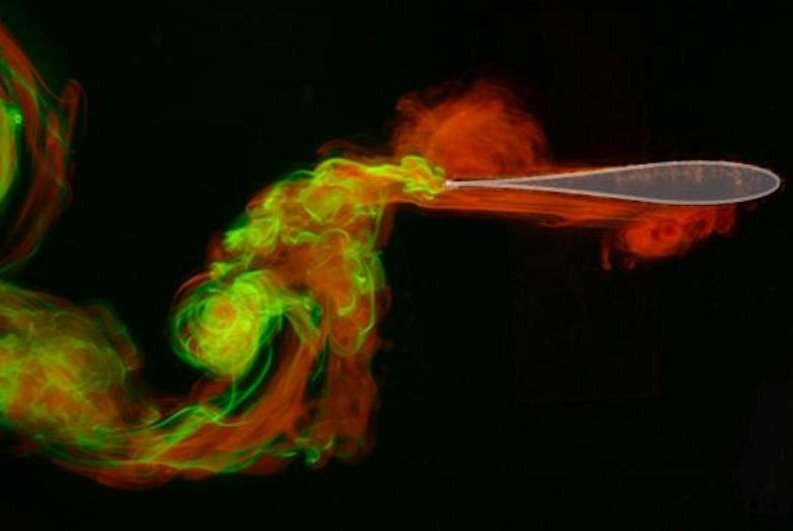The red and green vapors show the different vortices created by the edges of the flapping wing. Photo by the Applied Math Lab/NYU's Courant Institute of Mathematical Sciences
Jan. 30 (UPI) -- Scientists at New York University used a combination of computer simulations, 3D printing and lab tests to replicate evolution and identify the ideal wing shape for fast flapping flight.
"We can simulate biological evolution in the lab by generating a population of wings of different shapes, have them compete to achieve some desired objective, in this case, speed, and then have the best wings 'breed' to make related shapes that do even better," Leif Ristroph, an assistant professor at NYU's Courant Institute of Mathematical Sciences, said in a news release.
After their evolutionary models identified an array of wing shapes, scientists used a 3D printer to produce prototypes. Researchers raced the wings in NYU's Applied Math Lab. After identifying the fastest wing shapes, scientists used their genetic algorithm to "breed" the best shapes, producing offspring with a combination of beneficial aerodynamic attributes.
Their analysis showed the fastest shapes featured strong vortices at the wing's trailing edge that were not disrupted by the vortices produced at the wing's leading edge.
Scientists produced 15 generations of wings, each time using their algorithms to yield hybridized shapes and lab tests to identify the fastest parents with which to breed the next generation.
"This 'survival of the fastest' process automatically discovers a quickest teardrop-shaped wing that most effectively manipulates the flows to generate thrust," Ristroph said. "Further, because we explored a large variety of shapes in our study, we were also able to identify exactly what aspects of the shape were most responsible for the strong performance of the fastest wings."
Ristroph and his colleagues described their evolutionary simulation this week in the journal Proceedings of the Royal Society A.
The final wing shape, after 15 rounds of hybridization, features a razor-thin trailing edge, which leaves behind powerful eddies of swirling air.
"We view the work as a case study and proof-of-concept for a much broader class of complex engineering problems, especially those that involve objects in flows, such as streamlining the shape to minimize drag on a structure," said Ristroph. "We think this could be used, for example, to optimize the shape of a structure for harvesting the energy in water waves."















